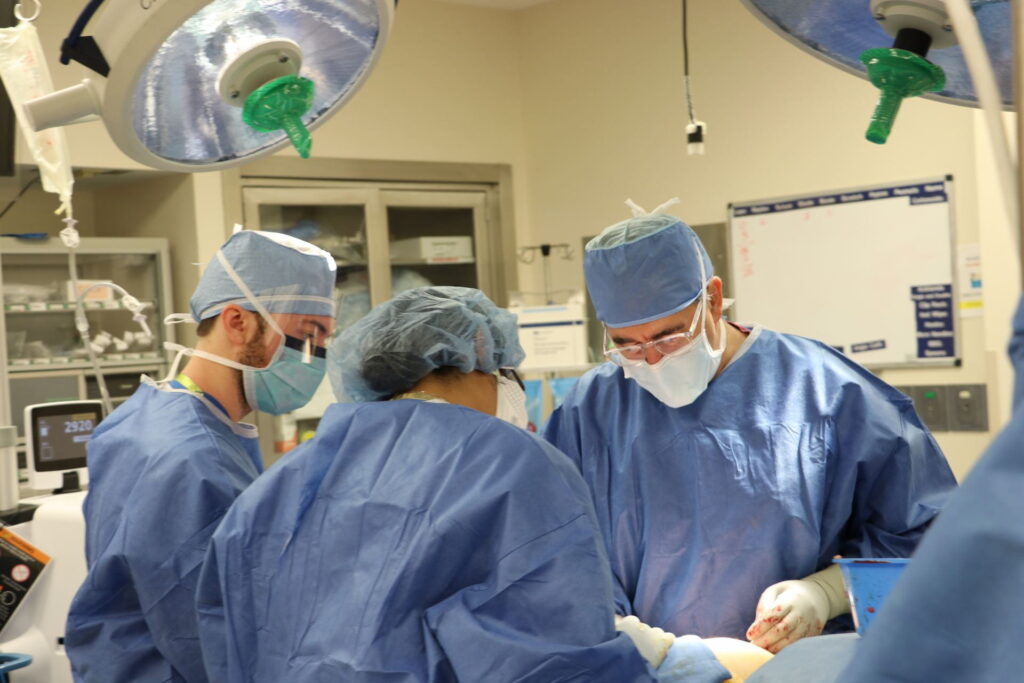
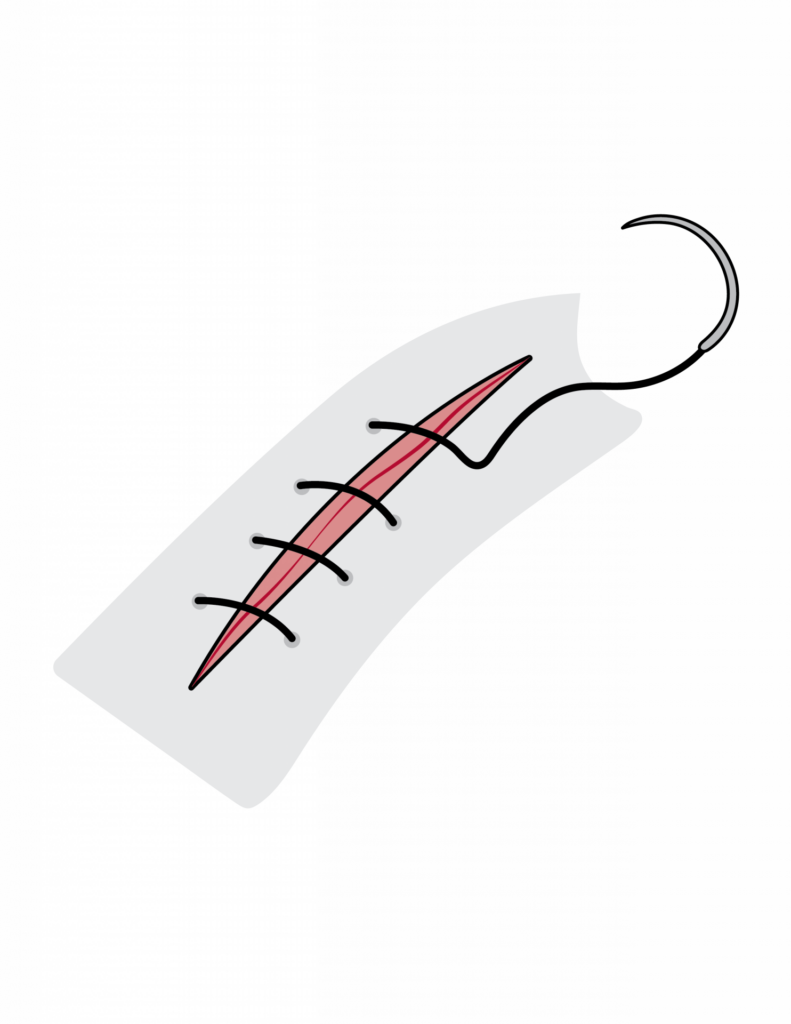
Plastic and reconstructive surgeons are experts in craniofacial, aesthetic, breast and general reconstructive, gender affirming, hand, limb preservation, lymphedema, nerve and pediatric plastic surgeries. The division is an international center for nerve injury and pioneer of peripheral nerve transfers. Faculty are leaders in basic, translational and clinical research, including clinical outcomes research and bench-to-bedside discoveries in nerve research and tissue engineering. Building on a legacy of training leaders and innovators, the division’s residency and fellowship programs offer comprehensive training, outstanding mentorship and exposure to advanced surgical technology.
4,304
Operating room cases
37,765
Visits
20
Faculty
5,851
Office procedures
141
Clinical research studies
$791,777
Research funding
Division of Plastic and Reconstructive Surgery | 2021 Annual Report
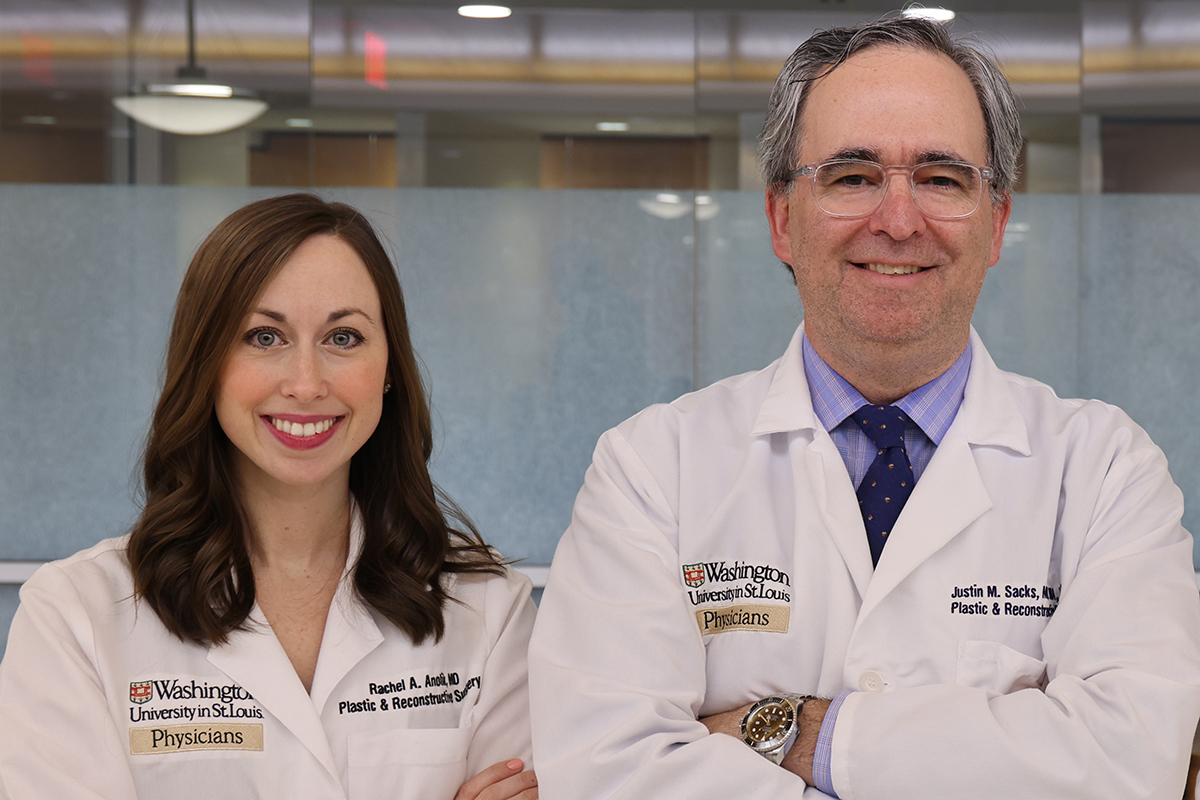
Washington University plastic and reconstructive surgeons perform head-to-toe corrective and cosmetic surgery across 10 clinical programs: aesthetic, breast reconstruction, craniofacial, general reconstruction, hand, limb preservation, lymphedema, nerve, pediatric plastic and gender affirming surgery.
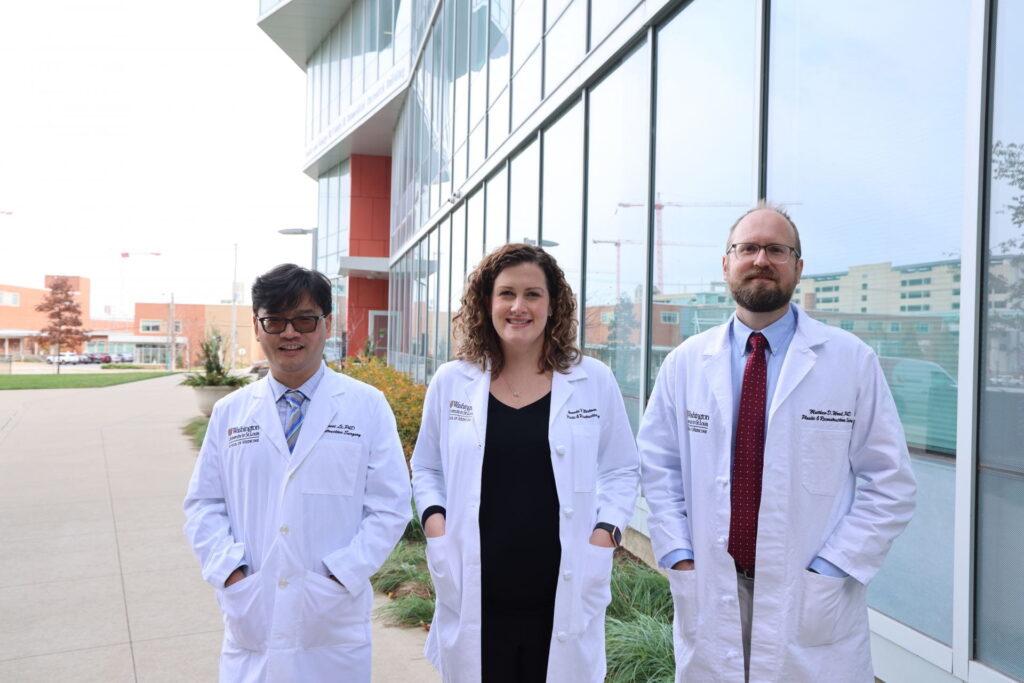
Research in the Division of Plastic and Reconstructive Surgery aims to improve patient care in each of the division’s 10 areas of clinical focus through the most advanced basic science, translational and clinical studies. Three full-time independent investigators lead the research programs in the division, collaborating with clinical faculty to solve problems in truly bench-to-bedside fashion.
Division of Plastic and Reconstructive Surgery Highlights | 2021 Annual Report
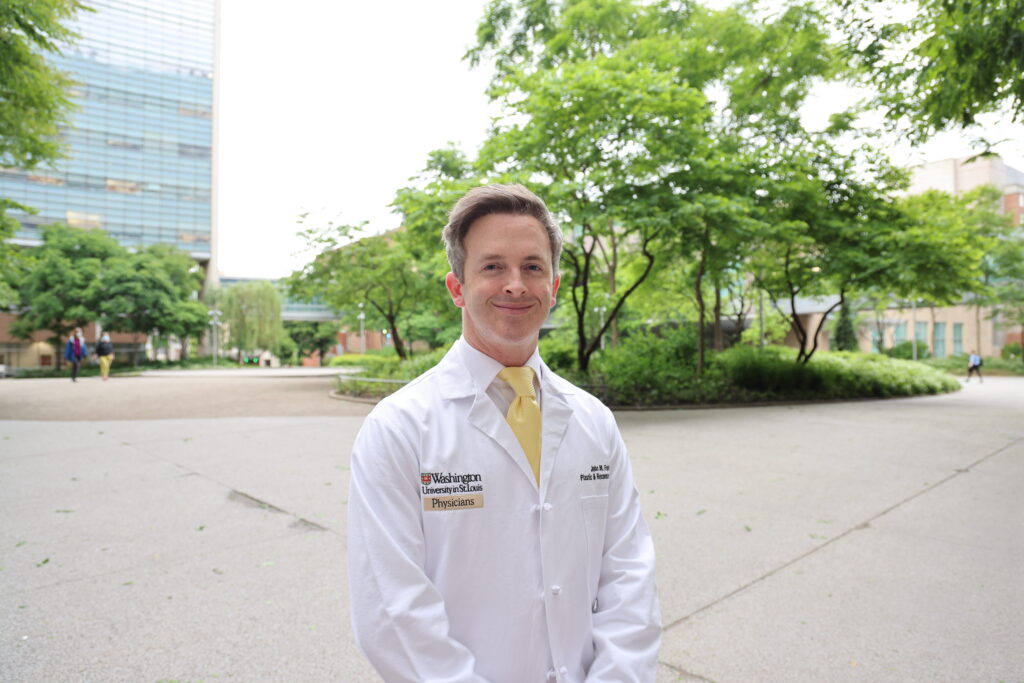
Clinical
Washington University plastic and reconstructive, acute and critical care, and vascular surgeons are leading the multidisciplinary Limb Preservation Program at the School of Medicine. Co- Director John Felder, MD, leads the plastic and reconstructive area of limb preservation, saving limbs with microvascular reconstructive surgery. The goal of the program is to restore form and function to patients who might otherwise require amputation due to vascular disease, trauma or other limb-threatening conditions. For patients who do require amputation, Felder ensures the highest level of function and reduces pain in the affected limb through nerve transfer procedures.
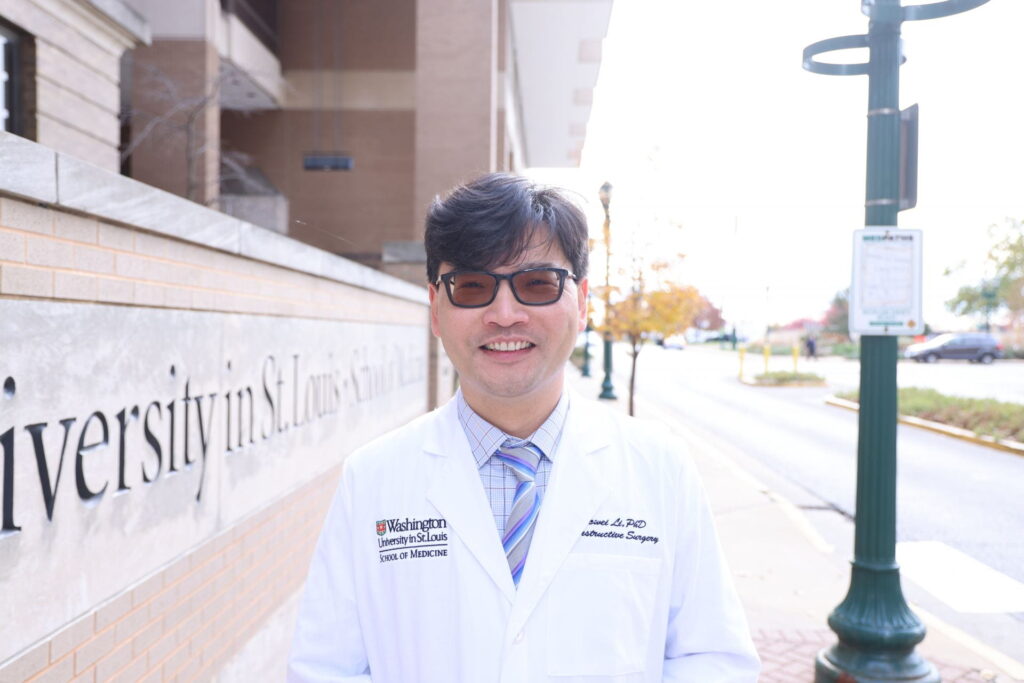
Research
Xiaowei Li, PhD, an accomplished researcher with expertise in biomaterials, tissue engineering and regenerative medicine, joined the division in June 2021. Li, who was awarded the American Heart Association Career Development Award in 2018, is developing biomaterials approaches to improve stem cell therapies and applying biomaterial platforms to promote tissue regeneration. Li and Division Chief of Plastic and Reconstructive Surgery Justin Sacks, MD, MBA, previously collaborated on research focused on soft tissue regeneration at Johns Hopkins School of Medicine, where Li was a postdoctoral fellow and assistant research scientist. “The arrival of Dr. Li marks an exciting period of growth for the Plastic Surgery Research Laboratories,” says Sacks.
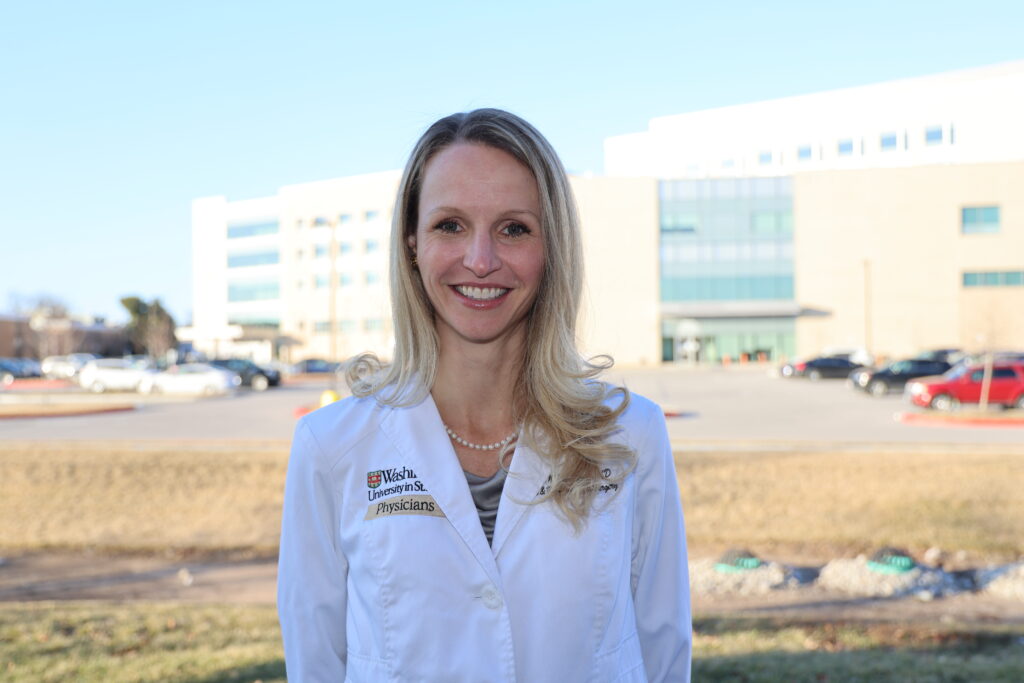
Education
The Plastic Surgery Residency Program, led by Program Director Alison Snyder-Warwick, MD, and Associate Program Director Kelly Currie, MD, provides clinical training in breast, craniofacial, head/ neck trauma, hand, microsurgery, cosmetics and peripheral nerve surgery. The program has trained residents for over a century and continues to grow and innovate in surgical education. More than 20 residents currently train in the program, which offers a high volume of diverse operative experience, and broad basic, translational and clinical research opportunities. “It is very rewarding to watch residents bloom into exceptionally competent, innovative and confident leaders in plastic surgery during their training,” says Snyder-Warwick, who is also Director of the Facial Nerve Institute and Co-Director of the Cleft and Craniofacial Institute at St. Louis Children’s Hospital.
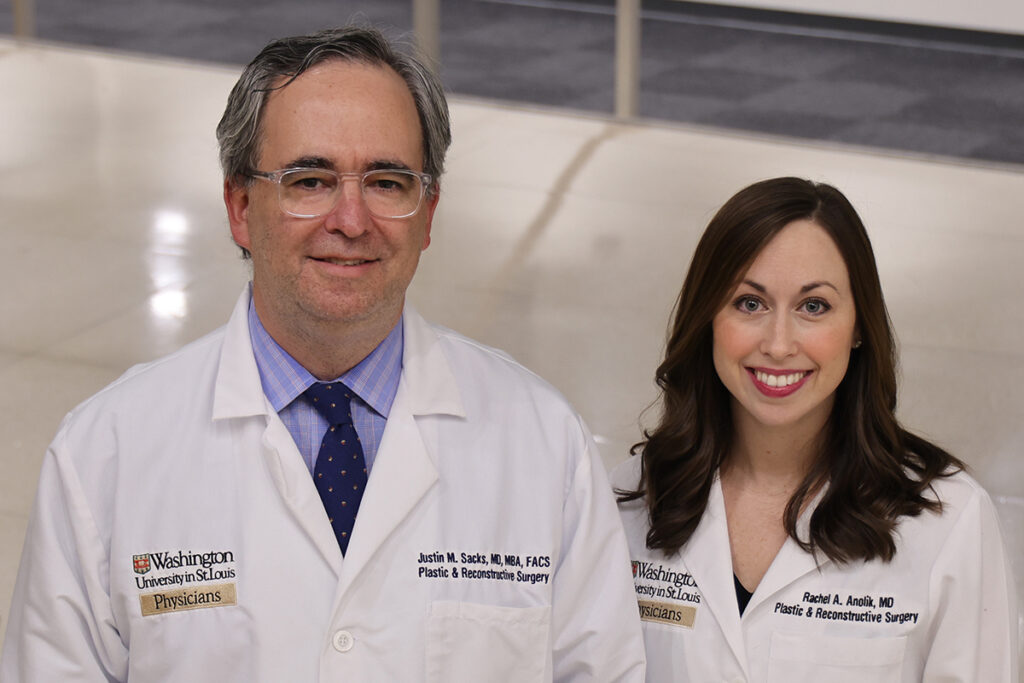
Leading in Microsurgery
Washington University plastic and reconstructive surgeons perform head-to-toe corrective and cosmetic surgery across 10 clinical programs: aesthetic, breast reconstruction, craniofacial, general reconstruction, hand, limb preservation, lymphedema, nerve, pediatric plastic and gender affirming surgery. Many of these areas of focus require expertise in microsurgery, a discipline that uses specialized operating microscopes and precision instruments to repair intricate structures smaller than a few millimeters in diameter. The growing team of microsurgeons in the Division of Plastic and Reconstructive Surgery restores form and function to an increasing number of breast surgery, limb preservation and lymphedema patients.
“With the recent introduction of additional faculty with fellowship training in microvascular surgery, we are able to build on the existing breadth of plastic and reconstructive surgery services at Washington University,” says Division Chief of Plastic and Reconstructive Surgery Justin Sacks, MD, MBA.
The microsurgery faculty now includes Rachel Anolik, MD, who completed a microsurgery fellowship at Memorial Sloan Kettering Cancer Center before joining the department in 2020. Sacks, who is the Shoenberg Endowed Chair in Plastic and Reconstructive Surgery, notes that Anolik has been an instrumental partner in developing a novel multidisciplinary lymphedema program at the School of Medicine.
“Improving the quality of life for patients with lymphedema is central to our goal,” says Anolik. “Our state-of-the-art multidisciplinary lymphedema treatment program offers conservative, medical, and therapeutic management. Our partners in therapy are crucial for baseline lymphedema measurements, preoperative optimization, postoperative therapy and limb volume surveillance.”
In breast reconstruction, many patients utilize their own tissue from other parts of the body, rather than having implants. Sacks, an expert in cancer reconstruction microsurgery, has seen a significant increase in the clinical volume of breast reconstruction surgery in the past year. Partnerships with surgical oncologists and other providers across the medical school, hospital system and Siteman Cancer Center enable Washington University plastic and reconstructive surgeons to provide the desired types of surgery and outcomes for women who choose breast reconstruction after cancer surgery.
The division extends its microsurgical expertise to its training programs through a new microsurgery fellowship program in partnership with the Department of Orthopedic Surgery. The Washington University Plastic and Orthopedic Reconstructive Microsurgery Fellowship Program provides broad microsurgical training, with an emphasis on limb reconstruction, lymphedema surgery and cancer reconstruction.
“Washington University plastic and reconstructive surgeons have trained at the premier medical schools and cancer centers in the country, bringing clinical expertise to our patients, depth to our training programs and rigor to our research programs,” says Sacks. “The Division of Plastic and Reconstructive Surgery has historically played a critical role in developing the specialty. We are continuing this tradition of excellence at Washington University today and into the future.”
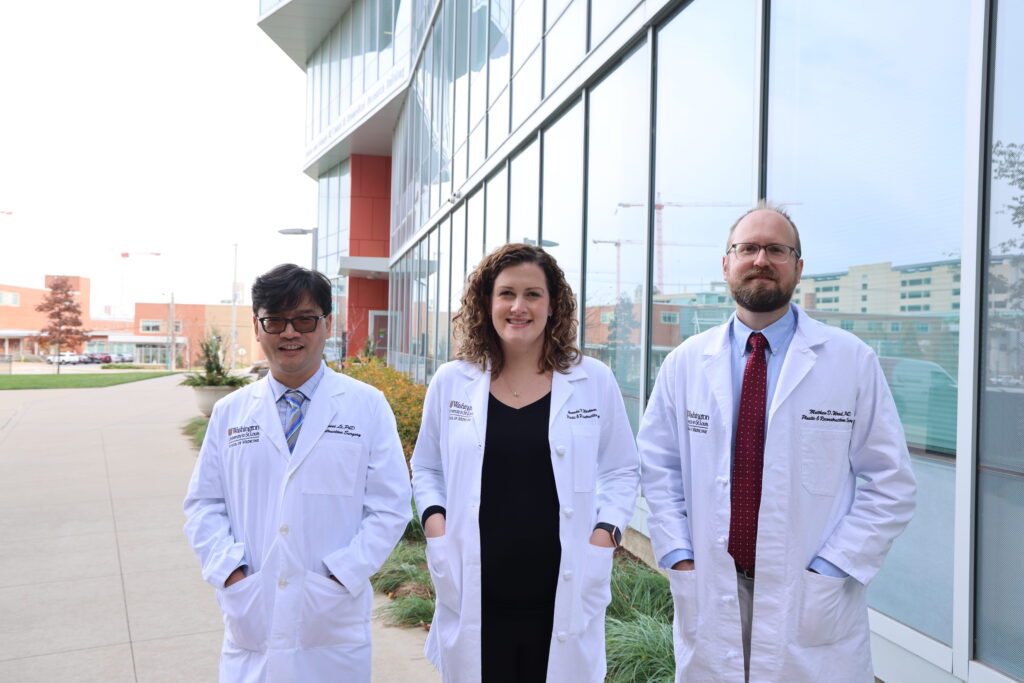
A Powerhouse of Plastic Surgery Research
Research in the Division of Plastic and Reconstructive Surgery aims to improve patient care in each of the division’s 10 areas of clinical focus through the most advanced basic science, translational and clinical studies. Three full-time independent investigators lead the research programs in the division, collaborating with clinical faculty to solve problems in truly bench-to-bedside fashion.
Director of Clinical and Translational Research Amanda Westman, PhD, focuses on translating novel technologies to the clinical setting using in vivo studies and computational models. Westman and Division Chief of Plastic and Reconstructive Surgery Justin Sacks, MD, MBA, are leading research on a single-use disposable device capable of performing continuous bedside pressure monitoring. Sacks and Westman received a 2021-22 Big Ideas Competition grant from BJC HealthCare and the School of Medicine to translate the device, which prevents pressure ulcer development and progression, to clinical use.
“It is an exciting time to be part of the Division of Plastic and Reconstructive Surgery,” says Sacks, who is the Shoenberg Professor of Plastic and Reconstructive Surgery. “We are growing our research programs to complement all of the division’s clinical programs. This institution is a powerhouse of plastic surgery research.”
Scientific Director of the Plastic Surgery Research Laboratories (PSRL) Matthew Wood, PhD, leads a consortium of investigators with the common objective of studying the pathology, mechanisms and prospective clinical treatments for the problems facing plastic and reconstructive surgeons today. The PSRL contains over 2,000 square feet of lab space and has the research infrastructure to perform the highest level of basic science investigation in tissue engineering, immunology and nerve physiology. PSRL researchers have been continuously NIH-funded since 1993, and have published more than 1,000 peer-reviewed articles and several dozen books and chapters. Wood and senior scientist Dan Hunter, who are investigating the role of T cells in nerve injury and regeneration, are among the nation’s leaders in neuroma research. The team published a book chapter, titled “Neuroma Pathology: The Role of Histologic Analysis,” in 2020.
“As part of our effort to think about problems in plastic surgery in ways that others have not, we are recruiting and building a team for diverse ideas,” says Wood. “We have new team members that will help us growth research programs to complement our core clinical programs.”
Among the new members of the division’s research program is Xiaowei Li, PhD, who joins the Division of Plastic and Reconstructive Surgery as an assistant professor of surgery. His research aims to create bioengineering platforms for nervous tissue regeneration after injuries or diseases.
“Together, Matt Wood and Amanda Westman have developed the research infrastructure to support future discoveries and innovations in plastic and reconstructive surgery,” says Sacks. “Our research fellows, investigators, clinical faculty and trainees benefit from having access to an organized, structured program of basic, translational and clinical research.”